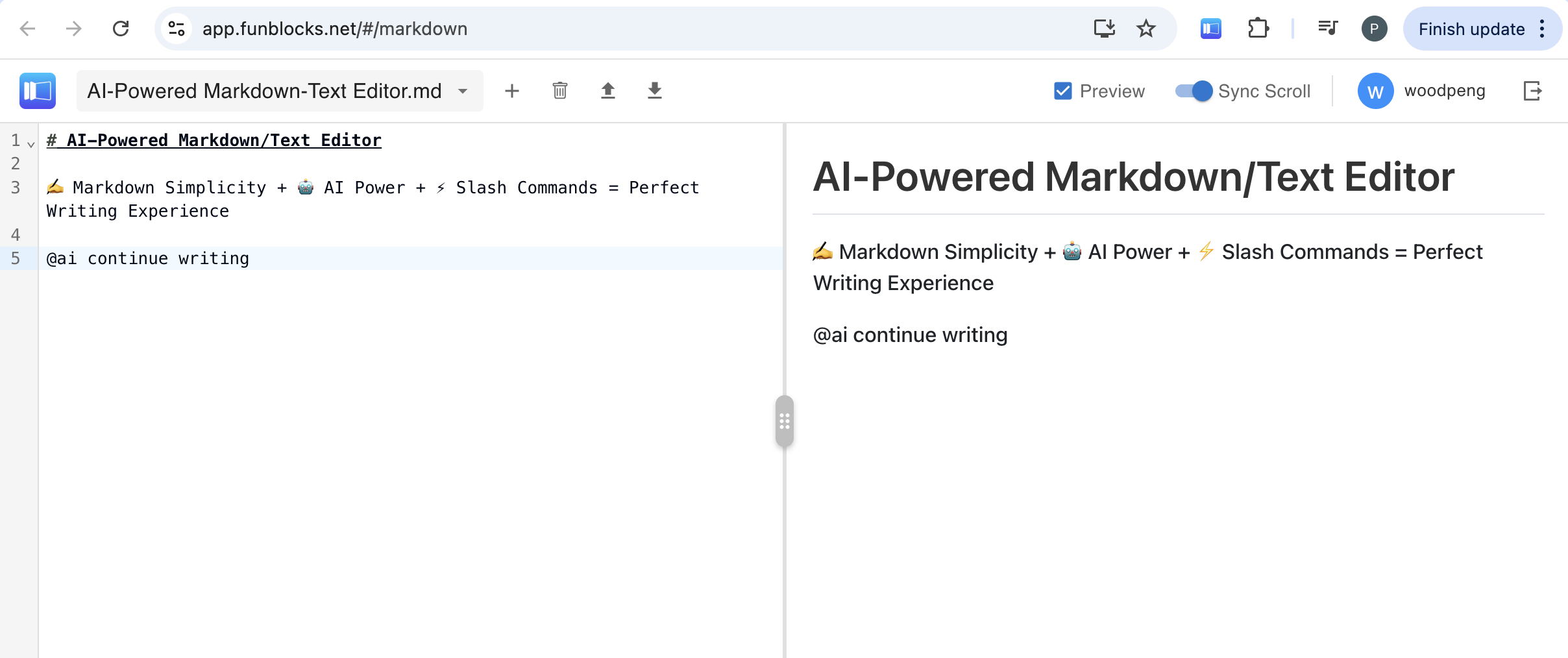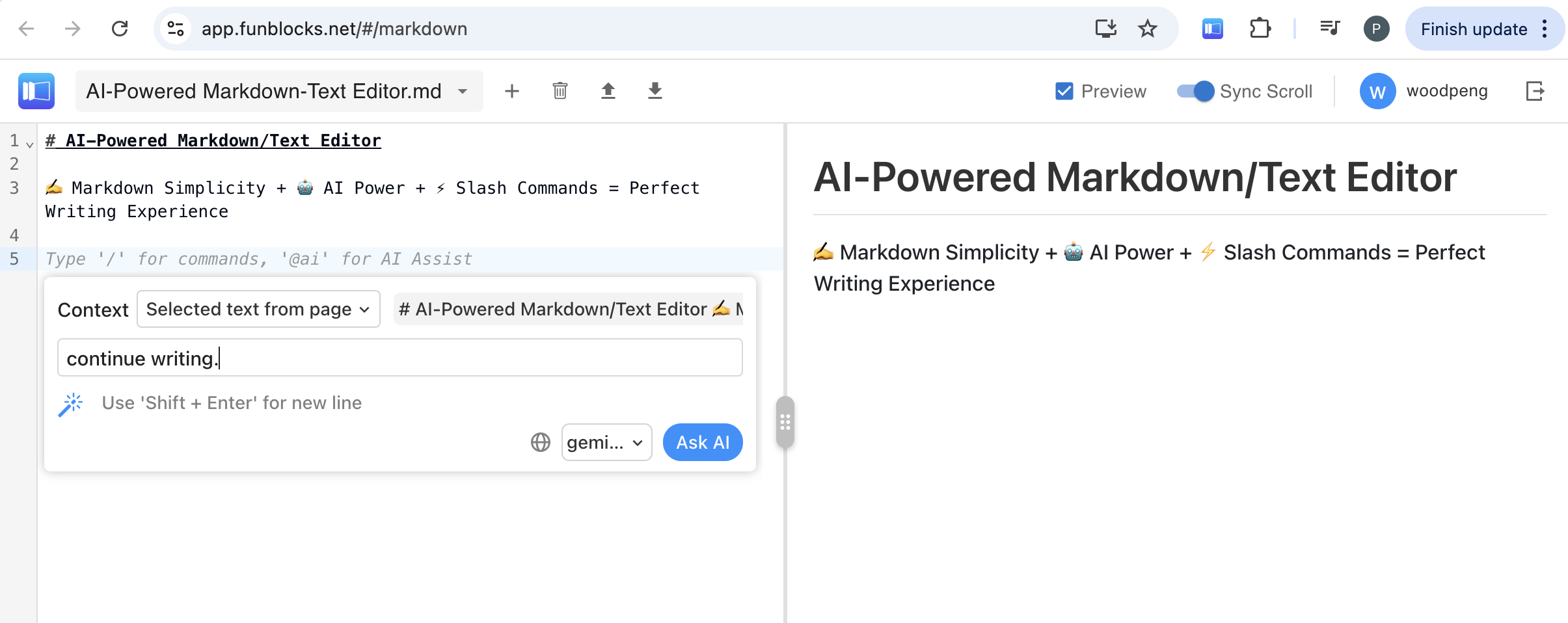Rethinking AI-Assisted Writing - The Editor as Shared Workspace
Introduction: The Interaction Design Problem
The rise of large language models has fundamentally altered how we approach writing. Yet, the dominant interaction paradigm—conversational interfaces like ChatGPT—presents a curious misalignment with the actual task of writing. When we examine the cognitive workflow of text creation and revision, we find that chat-based AI assistance introduces significant friction at precisely the moments when fluency matters most.
This article proposes a radical rethinking of AI writing assistance: moving from conversation to collaboration, from chat boxes to shared editing spaces, and ultimately, from AI as an external service to AI as an integrated co-pilot within the writing environment itself.
The Inefficiency of Conversational Writing Interfaces
Consider the typical workflow when using ChatGPT or similar chat-based tools for writing:
- Generate initial text in the chat interface
- Identify areas requiring revision
- Copy the problematic section
- Construct a natural language description of the desired changes
- Wait for the AI to regenerate the text
- Evaluate the result and repeat as necessary
This process reveals a fundamental inefficiency: spatial and contextual fragmentation. The writer must constantly translate between two distinct interaction spaces—the chat interface where AI operates and the editor where writing actually occurs. More critically, they must verbalize spatial intentions ("change the third paragraph") and contextual modifications ("make this less formal") through the inherently sequential medium of conversation.
The cognitive overhead compounds with each revision. Multiple changes require multiple conversational turns, each demanding careful linguistic specification of location, scope, and intent. The writer becomes a translator, converting their editorial intuitions into natural language instructions that the AI can parse.
The Notion Paradigm: Contextual AI Within the Editor
Tools like Notion represent a significant advancement in interaction design. By embedding AI capabilities directly within the editor, they eliminate the spatial fragmentation problem. The workflow becomes:
- Select text requiring modification
- Invoke AI through context menus or slash commands
- Choose from preset operations (polish, expand, change tone)
- Review and accept changes in place
This approach succeeds by collapsing the distance between intent and action. The editor becomes both the workspace and the interface for AI interaction. Spatial references ("this paragraph") are implicit in selection, eliminating the need for verbal location specification.
However, even this paradigm retains friction. Each AI invocation requires multiple steps: text selection, menu navigation, option selection. For frequent AI collaboration, these micro-interactions accumulate into meaningful overhead.
A New Paradigm: The Cursor as AI Invocation Point
What if we eliminate even these remaining steps? What if AI assistance were not a tool you invoke, but a presence you address?
Consider this interaction model:
The AI assistant exists at your cursor position, continuously ready for instruction. Your current line becomes the command interface. Prefix any line with @AI and what follows is immediately interpreted as a prompt, executed in context, with results appearing inline.
Enter @AI and your prompt:

Then press 'Enter' to call out AI Assistant:

This design philosophy rests on several key principles:
1. Minimal Mode Switching
Traditional interfaces require switching between "writing mode" and "AI invocation mode." The @AI prefix creates a lightweight, in-line signaling mechanism. The writer never leaves the text itself; they simply address a different collaborator.
2. Spatial Immediacy
The AI operates at the cursor position—the precise point of the writer's attention. Results appear exactly where the writer is working, eliminating visual scanning and context reconstruction.
3. Natural Handoff Metaphor
The @AI prefix parallels natural collaboration patterns. Just as one might say "John, could you..." in a collaborative writing session, @AI creates a clear handoff moment. The writer retains control of the "steering wheel" but can transfer it instantly when needed.
4. Preserving Context
Because all interaction occurs within the document itself, the AI maintains full contextual awareness of surrounding text. The writer doesn't need to explain "what paragraph" or "what section"—the cursor position provides unambiguous context.
The Editor as Shared Collaborative Space
This interaction model fundamentally reframes the relationship between writer and AI. Rather than being a separate service consulted through conversation, the AI becomes a co-occupant of the writing space. The editor transforms from a personal workspace into a shared collaborative environment.
This shift has profound implications:
Cognitive fluency increases because the writer never leaves their primary task context. There's no mental model switching between "talking to AI" and "writing text."
Iteration speed improves because feedback loops tighten. Generate, evaluate, revise—all within the same visual and interaction space.
Control remains with the writer because the AI operates only on explicit invocation. Unlike autocomplete or predictive text, which constantly interject suggestions, the @AI model respects the writer's agency.
Experience and Validation
We implemented this interaction paradigm in FunBlocks AI Markdown Editor, and the results have been remarkable. Writers report a qualitative shift in how they perceive AI assistance—not as a tool they use, but as a collaborator they work alongside.
The key insight: reducing interaction friction by even small amounts creates disproportionately large improvements in cognitive flow. When AI invocation becomes nearly effortless, writers find themselves collaborating more frequently, more experimentally, and more effectively.
Conclusion: Beyond Chat Boxes
The conversational AI interface served us well as an introduction to language model capabilities. But as these tools mature and become integral to knowledge work, we must rethink the interaction paradigms we've inherited from chatbots and virtual assistants.
Writing is not conversation. It is spatial, iterative, and context-rich. Our AI writing tools should reflect these realities. By embedding AI directly within the editor—not just as a feature, but as a collaborator sharing the same workspace—we can create interfaces that amplify rather than interrupt the creative process.
The future of AI-assisted writing is not better chat boxes. It's making the chat box disappear entirely.
Experience this interaction paradigm yourself at FunBlocks AI Markdown Editor